

The Universe. Grammar. Secret folder. ScienceCasts: Hidden Magnetic Portals Around Earth. ScienceCasts: Space-Time Vortex. Messaoud. Gravitation. Gravitation, or gravity, is a natural phenomenon by which all physical bodies attract each other.

It is most commonly recognized and experienced as the agent that gives weight to physical objects, and causes physical objects to fall toward the ground when dropped from a height. NASA Science. Fatras. Marechal88. Hmth. Aynnepryce. Taylor Swift. WRITING. Geology. EBOOKS FR. Open Source. Red dwarf. Red dwarfs.
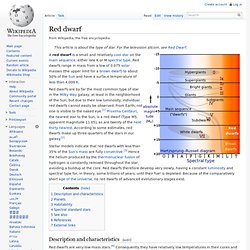
Acaryochloris marina. Chlorophyll d Acaryochloris marina is a symbiotic species of the phylum Cyanobacteria that produces Chlorophyll d, allowing it to utilise far-red light, at 710 nm wavelength.[1] Description[edit] It was first discovered in 1993 from coastal isolates of coral in the Republic of Palau in the west Pacific Ocean and announced in 1996.[2] Despite the claim on the 1996 Nature paper that its formal description was to be published shortly thereafter,[2] a tenatitive partial description was presented in 2003 due to phylogenetic issues (deep branching cyanobacterium).[3] Genome[edit] Its genome was sequenced in 2008, revealing a large bacterial genome of 8.3 Mb with 9 plasmids.[1]
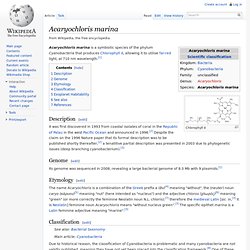
Cyanobacteria. By producing oxygen as a gas as a by-product of photosynthesis, cyanobacteria are thought to have converted the early reducing atmosphere into an oxidizing one, which dramatically changed the composition of life forms on Earth by stimulating biodiversity and leading to the near-extinction of oxygen-intolerant organisms.

According to endosymbiotic theory, the chloroplasts found in plants and eukaryotic algae evolved from cyanobacterial ancestors via endosymbiosis. Is Photosynthesis Possible For The Known Habitable Planet Candidates? Untitled. "chlorophyll d" - Google Search. Chlorophyll d as a major pigment. Chlorophyll d Synthase - Commercial Development and Industry Partnerships. Ref: 13037An enzyme that carries out the conversion of chlorophyll a to chlorophyll d has been identified.
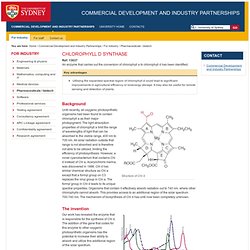
Background Structure of Chl d Until recently, all oxygenic photosynthetic organisms had been found to contain chlorophyll a as their major photopigment. Small galaxy harbours super-hefty black hole. A.
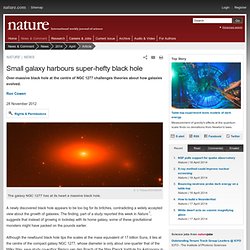
C. Fabian/ESA/NASA. A Large-Scale Model of the Functioning Brain. Solar and Terrestrial Radiation. Equation (1) Problem Set (#7)Opaque materials transmit no incident radiationTransparent material have little or no absorption and scattering E.g.
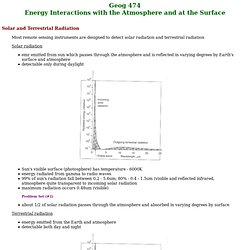
,clear glass - high transmission, low reflection and absorptionfresh snow - high reflectance, low transmission and absorptionfresh asphalt - high absorption, minimum transmission and reflection. Stellar classification. Spectral type Most stars are currently classified under the Morgan–Keenan (MKK) system using the letters O, B, A, F, G, K, M, L, T and Y a sequence from the hottest (O type) to the coolest (Y type).
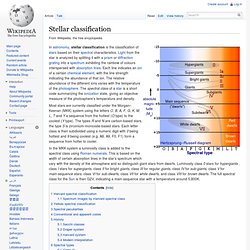
The types R and N are carbon-based stars, the type S is zirconium-monoxide-based stars. Each letter class is then subdivided using a numeric digit with 0 being hottest and 9 being coolest (e.g. A8, A9, F0, F1) form a sequence from hotter to cooler. In the MKK system a luminosity class is added to the spectral class using Roman numerals. Harvard spectral classification[edit] Stellar evolution. File:Evolution of a sun-like star.png. VY Canis Majoris. VY Canis Majoris (VY CMa) is a red hypergiant in the constellation Canis Major.

It is one of the largest known stars by radius and also one of the most luminous of its type. It is approximately 1,420 ± 120 solar radii[8] (equal to 6.6 astronomical units, thus a diameter about 1,975,000,000 kilometres (1.227×109 mi)), and about 1.2 kiloparsecs (3,900 light-years) distant from Earth. VY CMa is a single star categorized as a semiregular variable and has an estimated period of 2,000 days. It has an average density of 5 to 10 mg/m3. Cygnus X-1. Cygnus X-1 belongs to a high-mass X-ray binary system about 6,070 light-years from the Sun that includes a blue supergiant variable star designated HDE 226868 which it orbits at about 0.2 AU, or 20% of the distance from the Earth to the Sun.
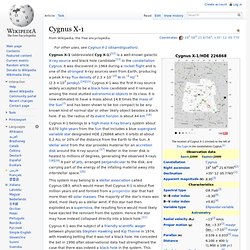
A stellar wind from the star provides material for an accretion disk around the X-ray source.[17] Matter in the inner disk is heated to millions of degrees, generating the observed X-rays.[18][19] A pair of jets, arranged perpendicular to the disk, are carrying part of the energy of the infalling material away into interstellar space.[20] This system may belong to a stellar association called Cygnus OB3, which would mean that Cygnus X-1 is about five million years old and formed from a progenitor star that had more than 40 solar masses.
Galaxies and Cosmology. Smástirni á ógnarhraða fram hjá jörðu. Hubble captures extraordinary view of Universe. By Jonathan Amos Science correspondent The Hubble Space Telescope (HST) has produced one of its most extraordinary views of the Universe to date. Called the eXtreme Deep Field, the picture captures a mass of galaxies stretching back almost to the time when the first stars began to shine. But this was no simple point and snap - some of the objects in this image are too distant and too faint for that. Rather, this view required Hubble to stare at a tiny patch of sky for more than 500 hours to detect all the light. "It's a really spectacular image," said Dr Michele Trenti, a science team member from the University of Cambridge, UK. The patch of sky captured in Hubble's XDF image, compared in size to the Moon "We stared at this patch of sky for about 22 days, and have obtained a very deep view of the distant Universe, and therefore we see how galaxies were looking in its infancy.
"